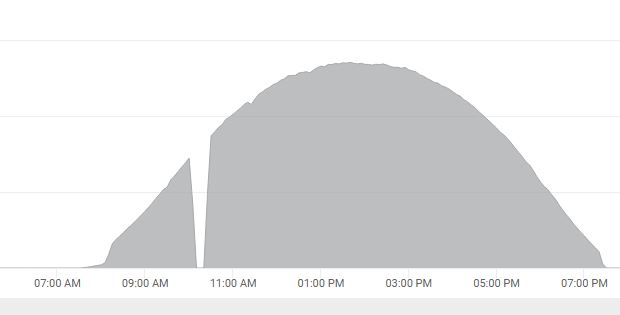Solar Power – High Grid Voltage
One problem with solar systems that I only found out about after my solar system was installed is the effects of ‘High Grid Voltage’.
How I found out
The system that I bought had a Fronius Inverter which includes a quite comprehensive monitoring and reporting program.
Soon after the system was installed I started getting e mail reports with the following message: “4 – Gradual voltage dependend power reduction” with a time and date.
The time and date coincided with power output drops like the one shown in the graph below. (at around 10.30am)

This output drop occurred on a cloudless day.
On talking with the systems supplier Essential Solar they were able to access the inverter’s data and identify the problem as High Grid Voltage.
Grid Voltage
I must say when I thought about grid voltage at all I thought it was around 220-240 volts.
Australian Standard AS 60038 however, says the nominal mains voltage is 230 volts. . . . . what that means is 230 volts +10%, – 6%, i.e. 216.2 to 253 V.
In practise the electrical distributors seem to set their systems up to run above 230 volts.
The problem is that if the grid voltage exceeds 254 volts a modern inverter is designed to throttle back, and shut down at 255 volts.
In my case the grid voltage was typically around 253 at 6.00am in the morning.
As soon as my solar panels, and the panels of my neighbours, started to generate the extra power pushed into the grid caused the voltage to rise further.
Solution
Once the problem was identified Essential Solar took up my case with the Electrical Distributor (who is legally required to ensure that the voltage stays within the 216.2 – 253 volt range)
The solution however does take some time as follows:
- A week for the electrical distributor to install voltage monitoring equipment on our local substation.
- 2 weeks of monitoring the voltage.
- 1 week to evaluate the results,
- 6 weeks (30 working days) to install equipment to ensure the voltages will in future be within the required range.